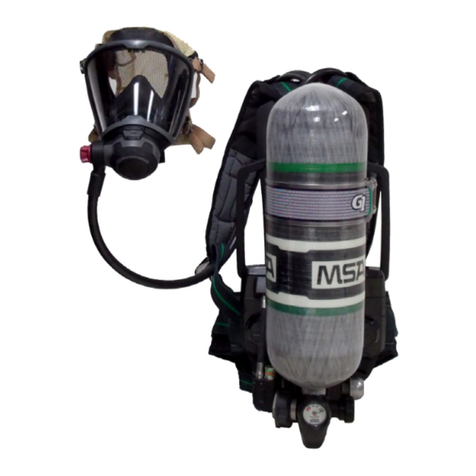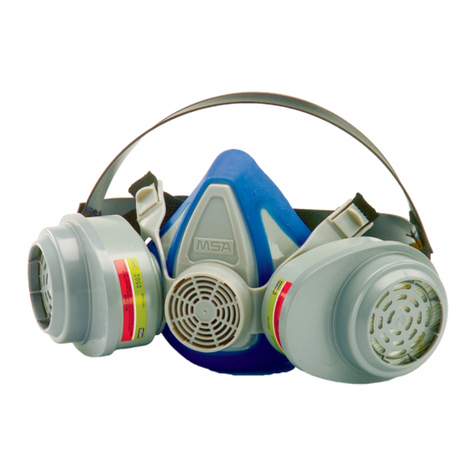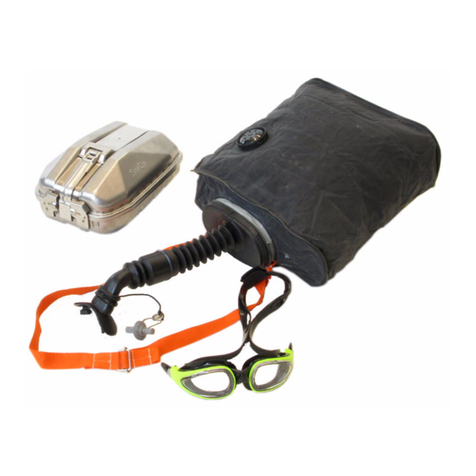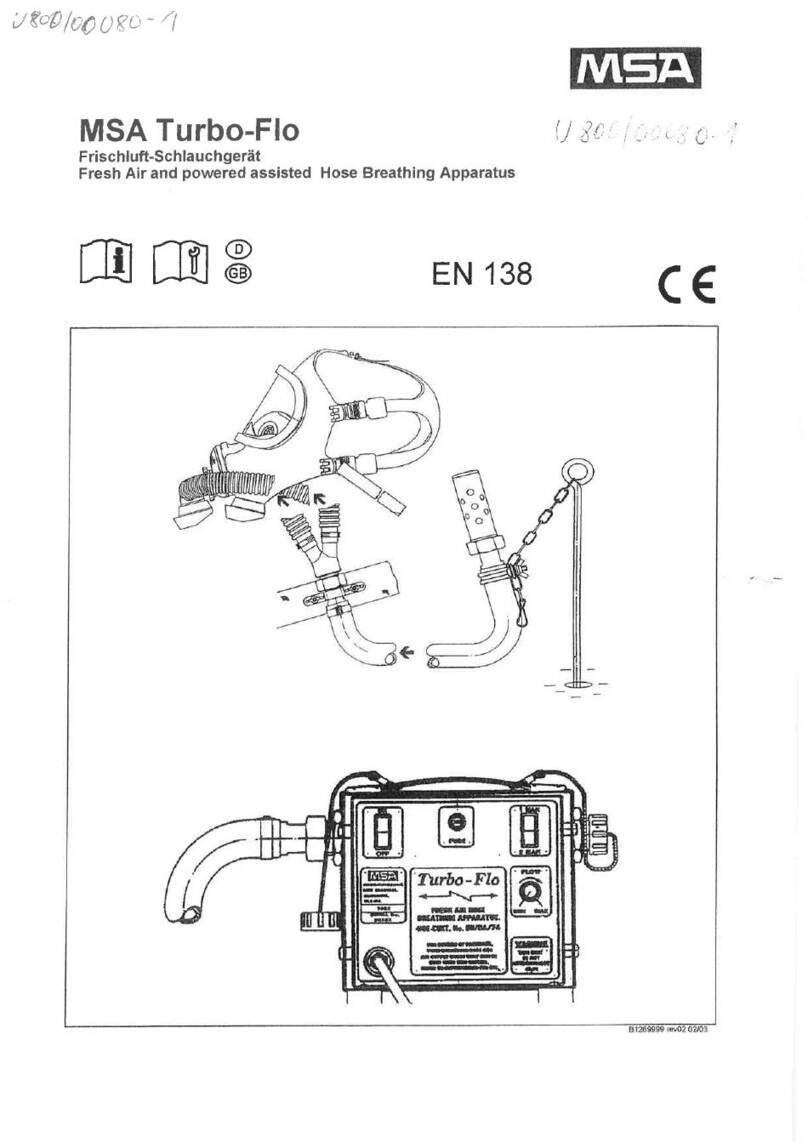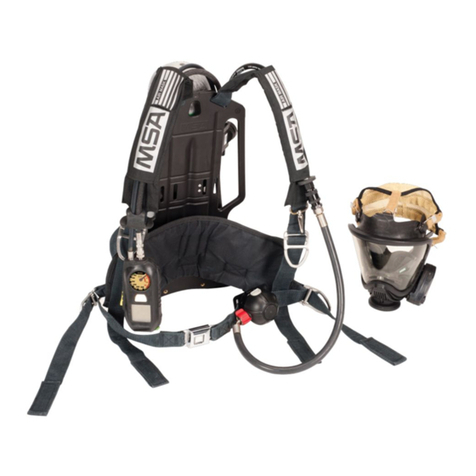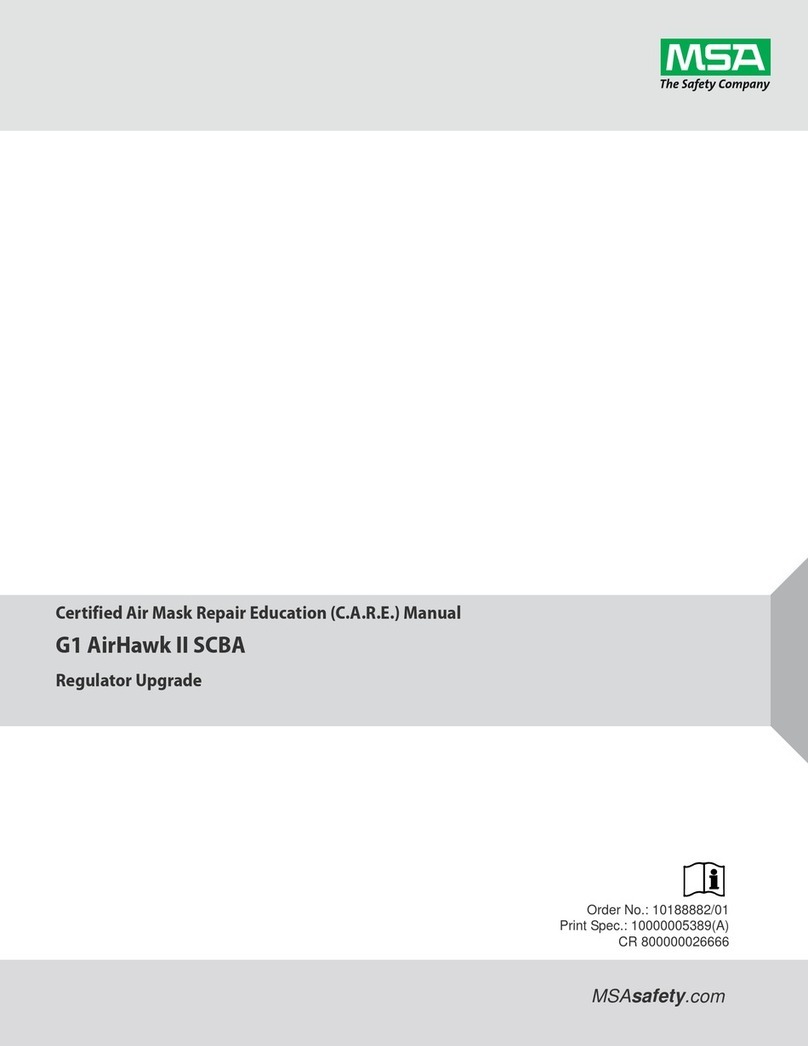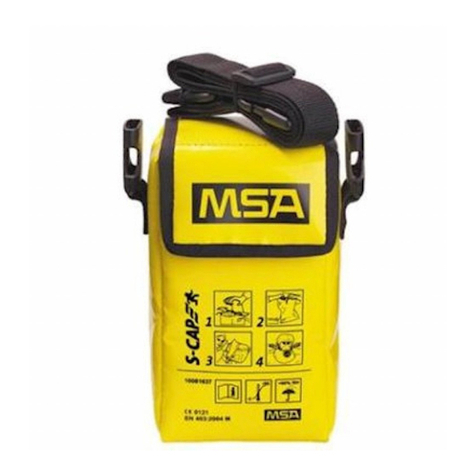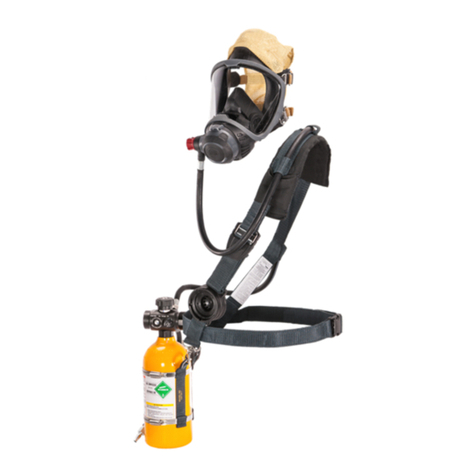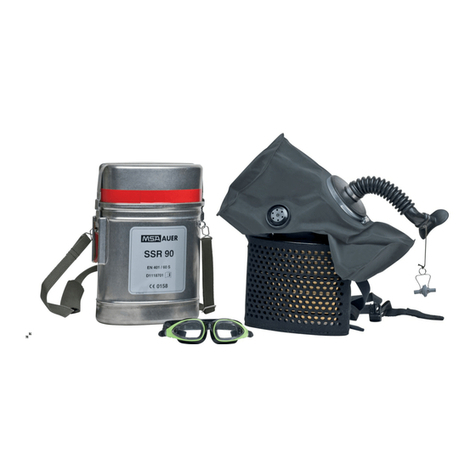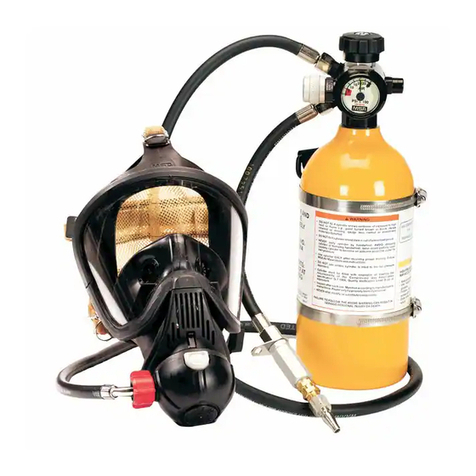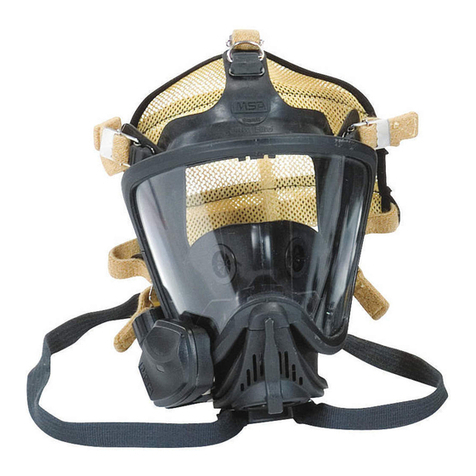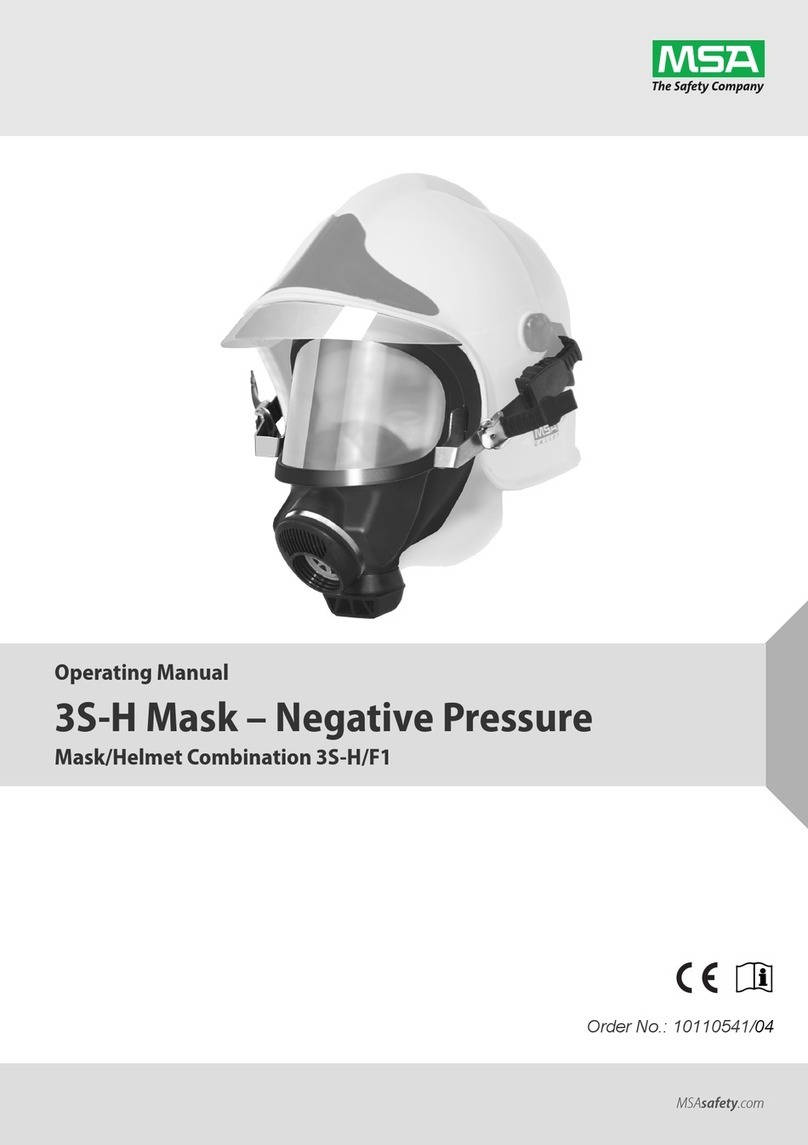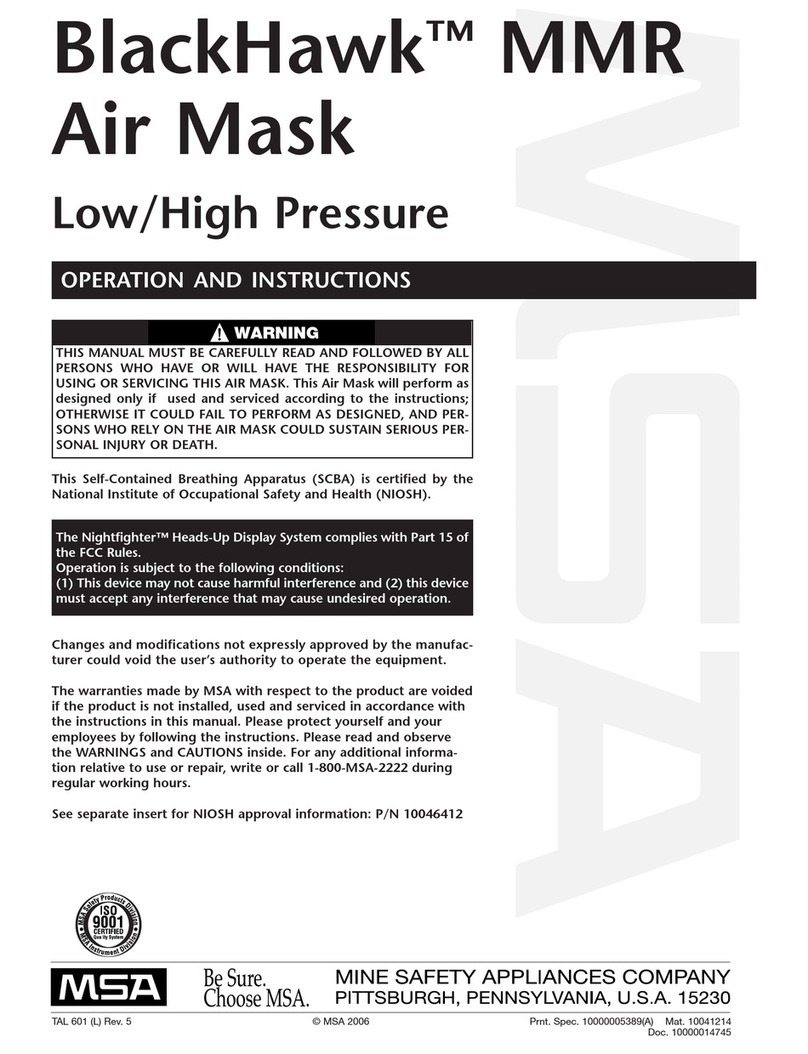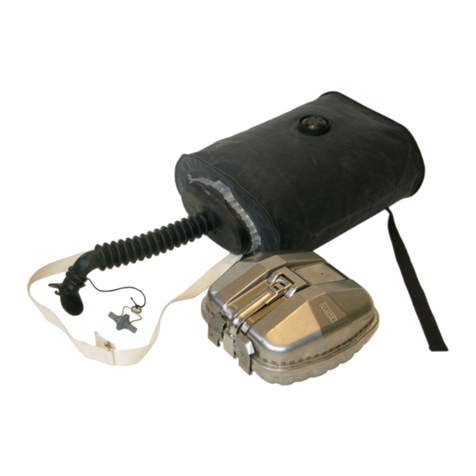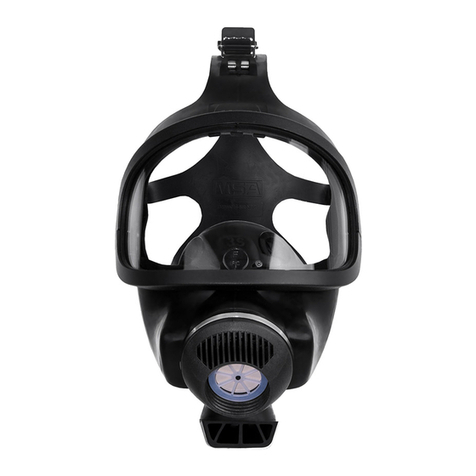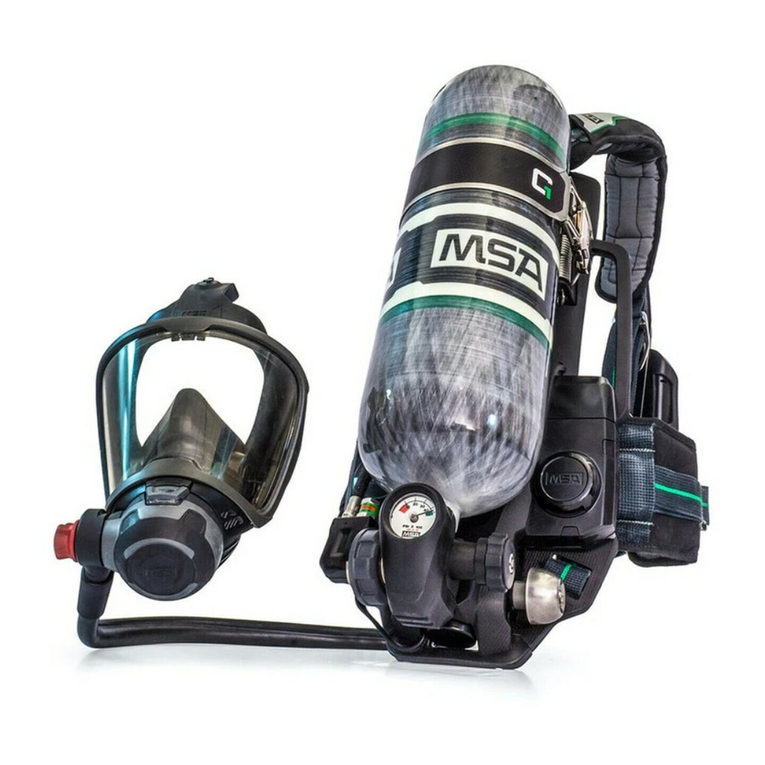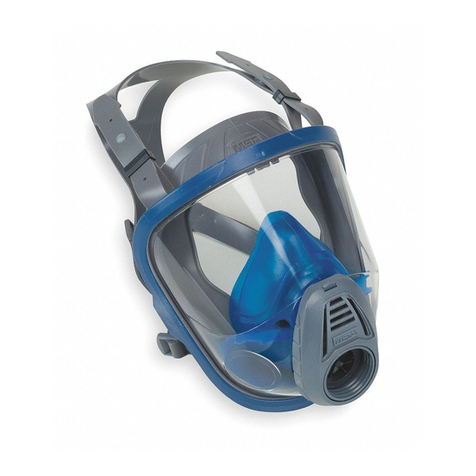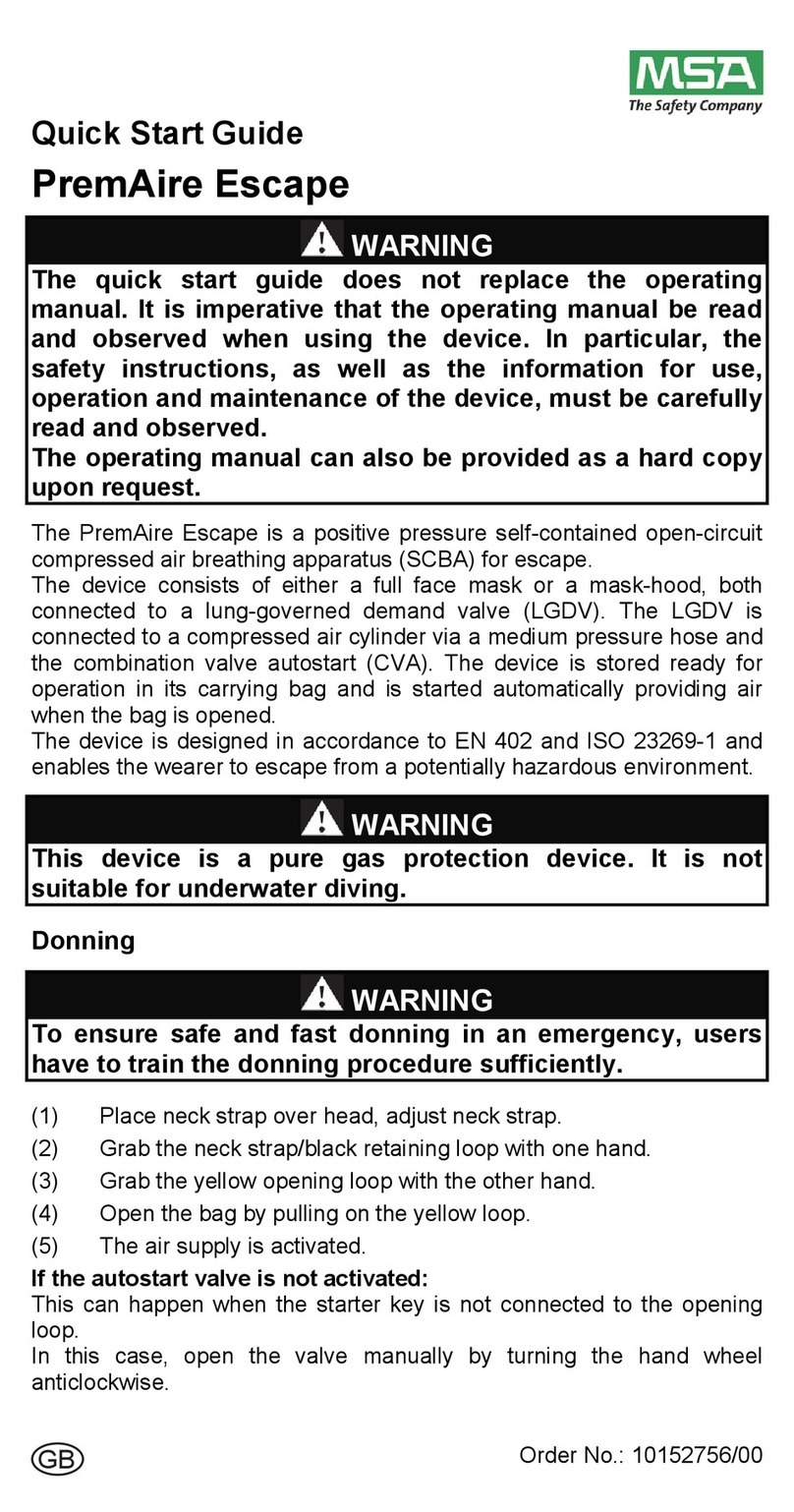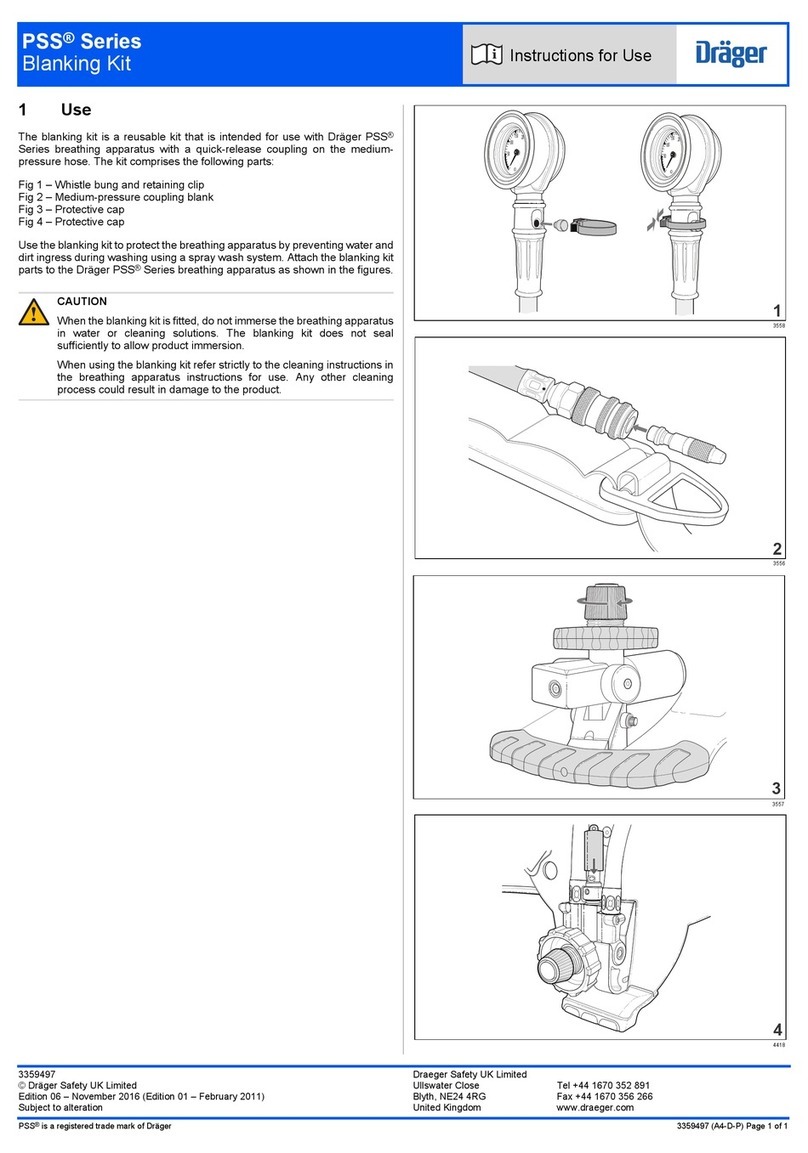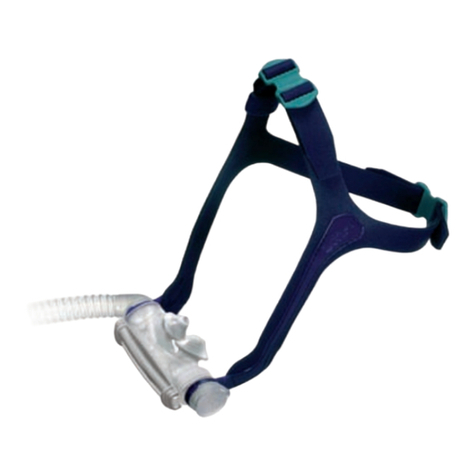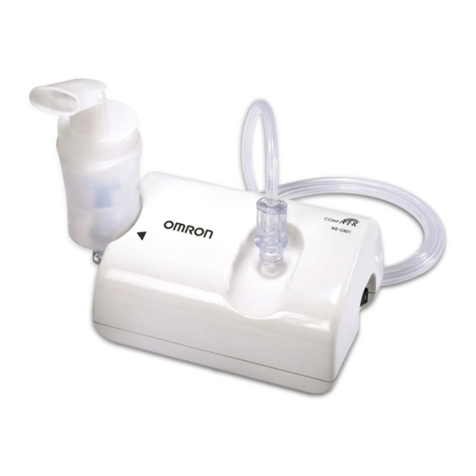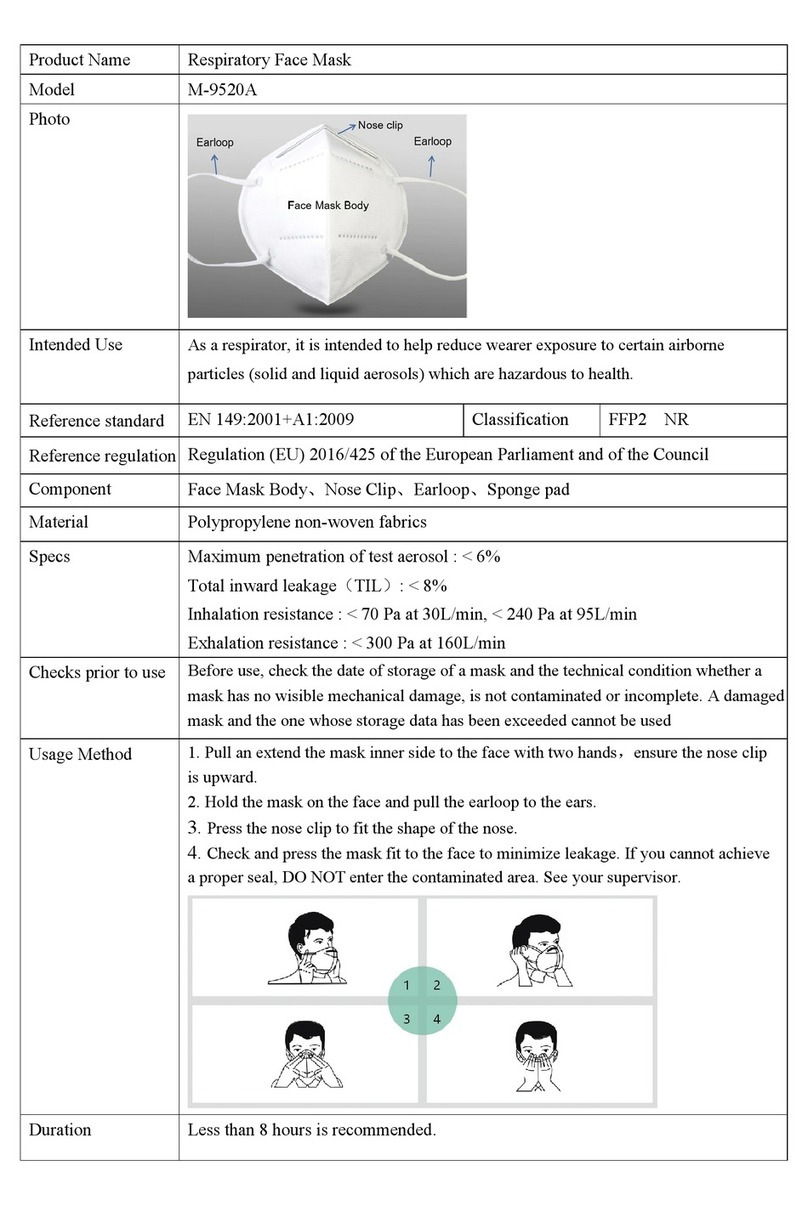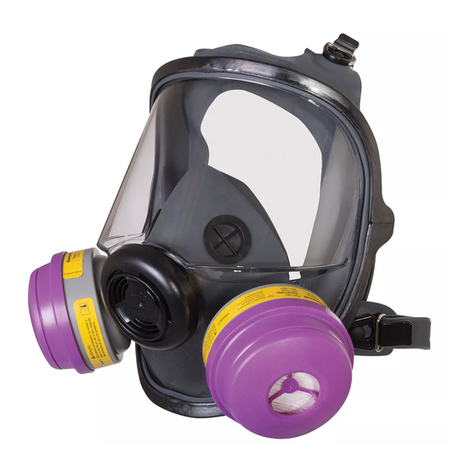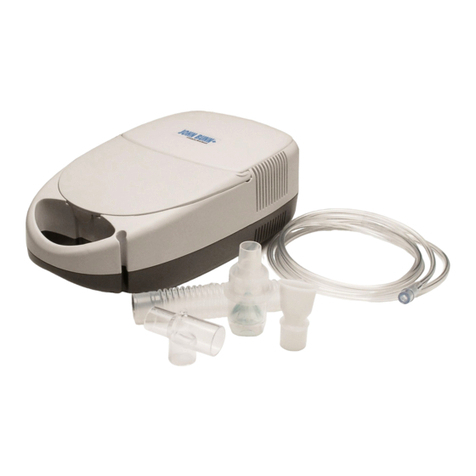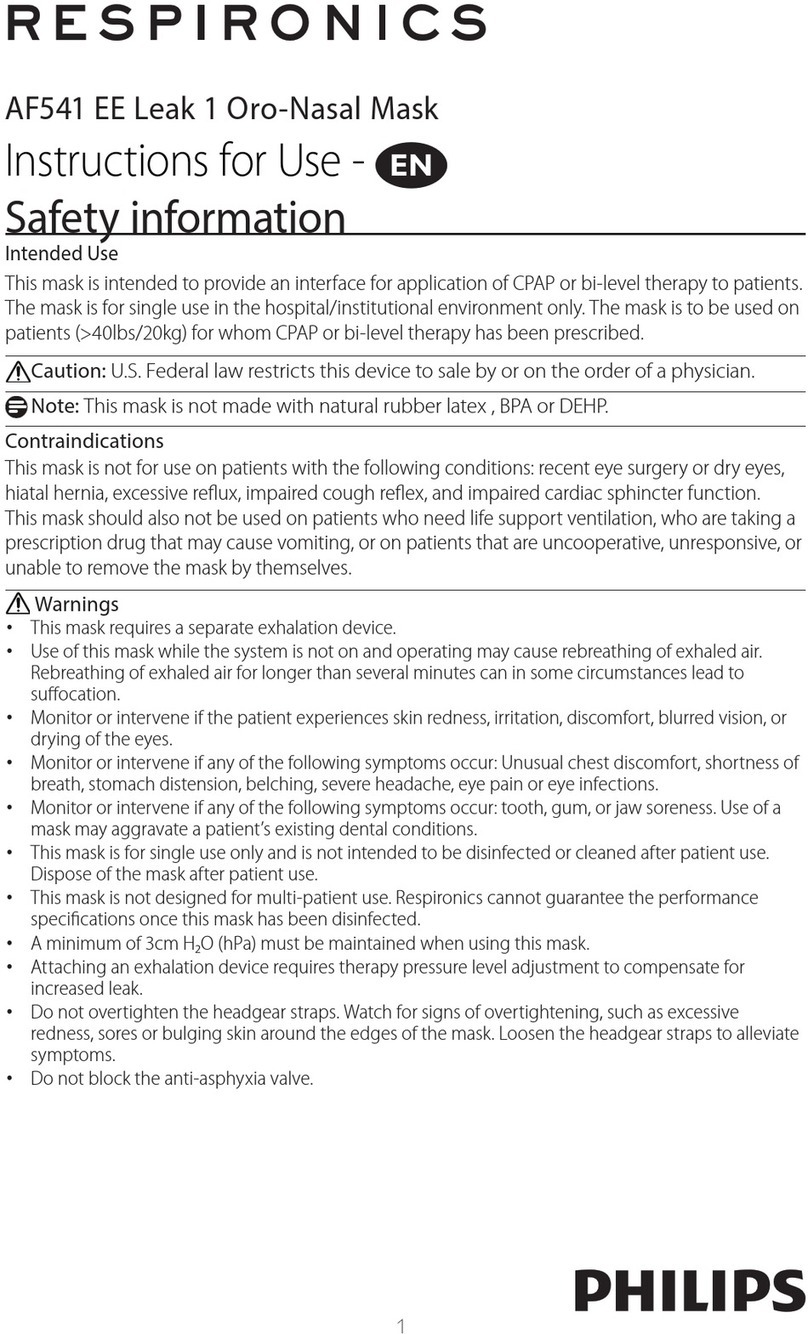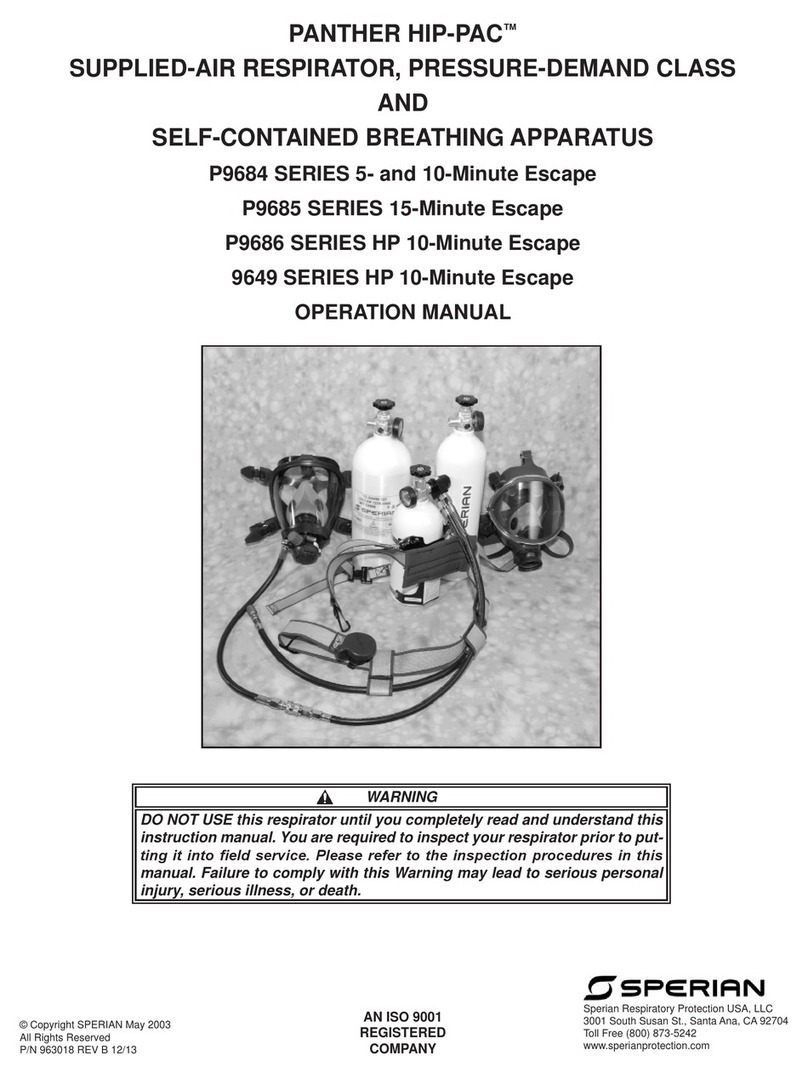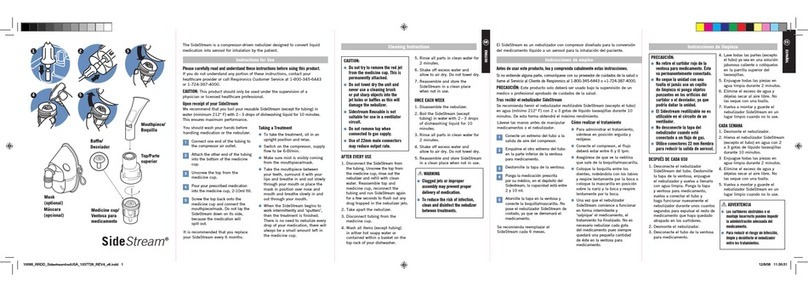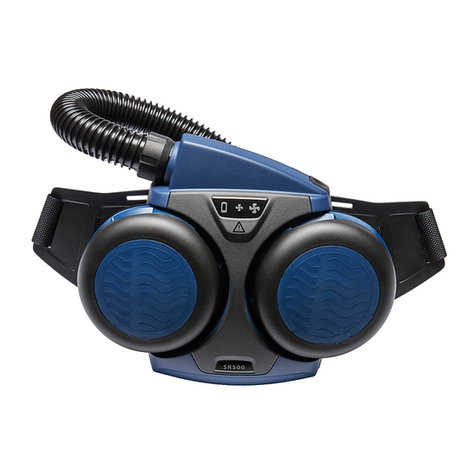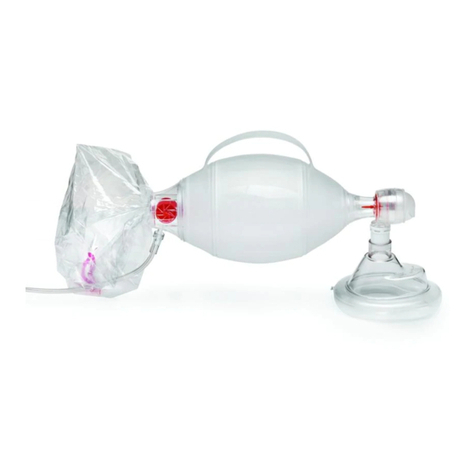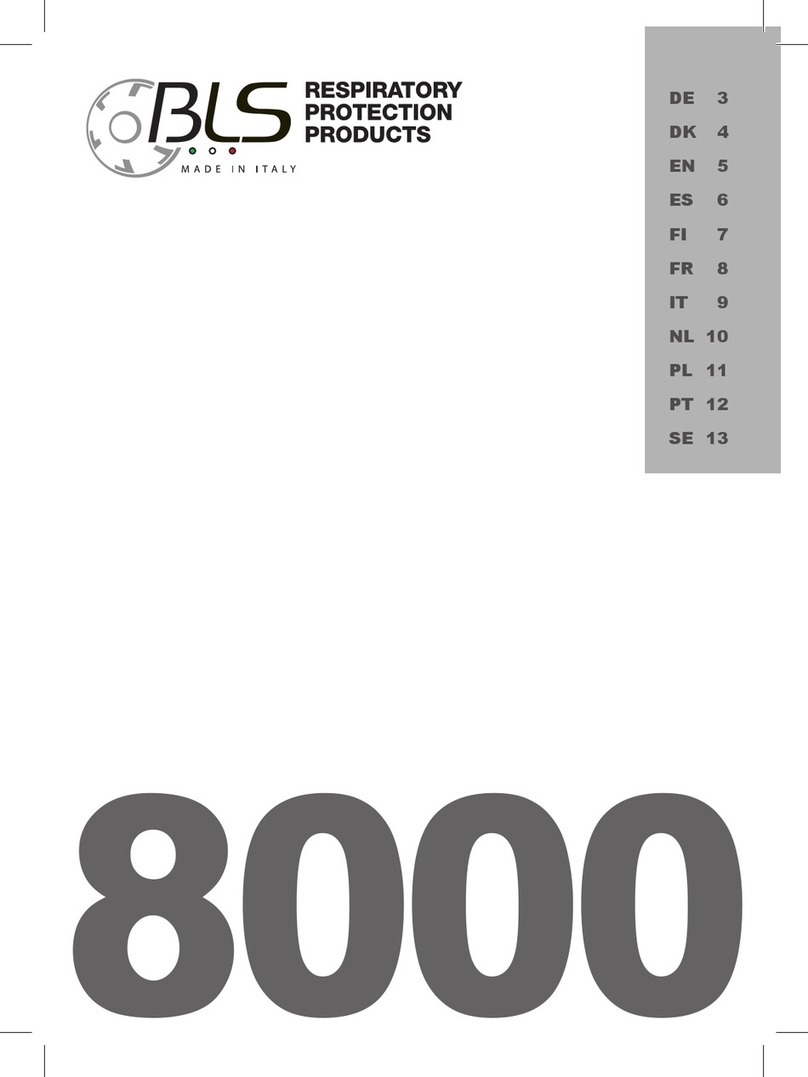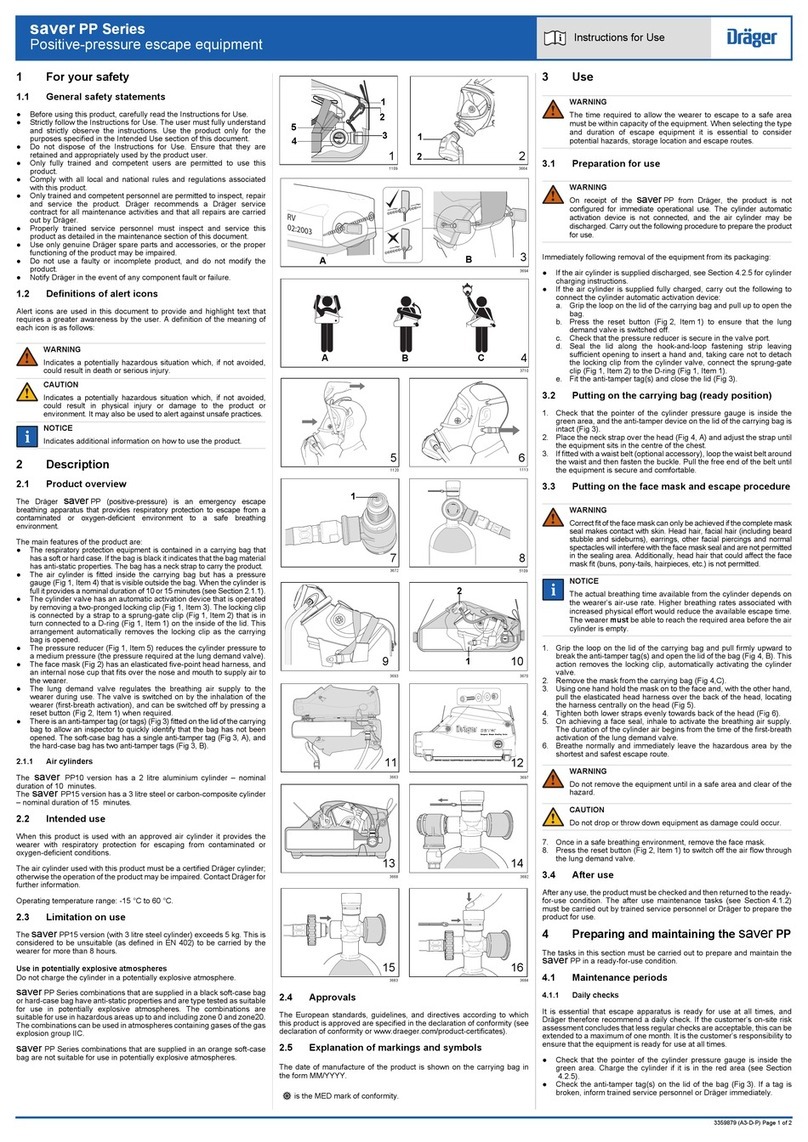
limited to atmospheres 100 times (or less) the de ined permissible Airborne
Exposure Limit (AEL) or Time Weighted Average (TWA) o the contaminate
(except or mustard and lewisite, or these agents the recommended use con-
centration is to be limited to the AEL or TWA).
For uses in atmospheres containing chemical or biological warfare
agents, as with all hazardous atmospheres, it is recommended that a
complete respiratory and body protection program be developed and full
protective ensemble be utilized. This program should as a minimum
include the following items:
Before Entering a CBA Contaminated Area
1. All users should be trained (on a regular basis) in the use of the
protective equipment, the hazard, the effects and physical signs of
agent over exposure, governing protocols or regulations concern-
ing the hazard and user, medical needs, emergency and first aid
procedures in case of over exposure, decontamination, and han-
dling and disposal of contaminated equipment.
2. Each user should be quantitatively fit tested in the facepiece they
will be using and have a tested fit factor of 1000 or greater.
3. It is recommended that each user should be outfitted with a face-
piece with CBA canister, a hood, and full chemical protective suit
including gloves and shoe coverings.
4. The user should determine or check with the safety office to verify
that the protective equipment to be used is sufficient for exposure
to their particular hazard and contamination level. Mis-use of the
protective equipment can result in serious personal injury or death.
During the Stay in the CBA Contaminated Area
1. It is recommended that the area be real timed monitored (with
alarm) for exposure levels of the contaminate. If the monitored
contaminate level is above the allowable exposure limit or maxi-
mum use concentration (as determined by the governing protocol),
the user should leave the area immediately.
2. The user should not remove any of the CWA protective clothing
while in the contaminated area. This action could result in a seri-
ous injury or death.
3. If symptoms of CBA over exposure are present, seek medical treat-
ment and attention immediately.
After Exposure to a CBA Contaminated Area
1. A decontamination procedure for the user and the protective
equipment should be developed and implemented.
2. Once the user leaves the contaminated area, they should enter the
decontamination area and follow the set decon procedure. Failure
to follow an acceptable decon procedure could lead to serious
injury or death.
3. Once the user and the protective equipment have been decontam-
inated, proper disposal of affected equipment is to be performed.
Disposal is to be performed as required by federal, state and/or
local laws that apply to CBA contaminated materials.
6TAL 704 (L) Rev. 11 - 487373
